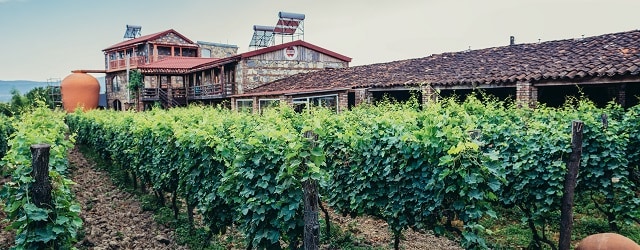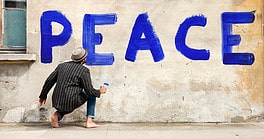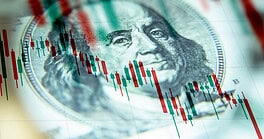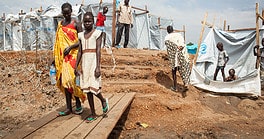Conflicts persist, but analysts see economic reforms continuing and democracy taking hold in a crossroads region.

The South Caucasus remains one of the most volatile portions of Eurasia. But this mountainous, culturally diverse crossroads region is changing—almost in spite of itself—making its underlying economic assets more visible and attracting the attention of analysts who previously took a dim view of it.
“The region is now in a much better place than it was 10 years ago, even though it remains fractured,” says Laurence Broers, a Caucasus specialist at London’s Chatham House. While its three countries remain divided, leaning on conflicting alliances—Georgia with the West, Armenia with Russia, Azerbaijan with Turkey—all are becoming more pluralistic and democratic, their economies evolving and maturing as authoritarianism recedes.
“Georgia and Armenia don’t have the resources for sustained authoritarianism; there simply isn’t any alternative to more reform, democracy and foreign direct investment [FDI],” Broers says. “Even Azerbaijan must evolve. Despite the entrenchment of the Aliyev regime, the need for a more diversified economy is increasingly self-evident—domestic oil production has peaked, and its gas exports are competing with other countries.’”
The political fortunes of the three countries are not evolving in lockstep, warns Lilit Gevorgyan, Caucasus analyst at IHS Markit. “Concerns are mounting over Georgia’s democratic credentials,” she says. Armenia is improving, having been named on the Economist Intelligence Unit’s Democracy Index 2019 as the most democratic of the three, ranking at 86, compared to Georgia at 89. Azerbaijan is a distant 146.
Armenia’s democratic transformation, however, looks set to continue. “Public pressure on the revolutionary government is strong and patience short,” Gevorgyan says. “There is no room for backtracking. Moreover, Armenia’s new opposition forces are even more assertive in wanting corruption-free state institutions and a robust economy.”
Due to continuing tensions—especially between Armenia and Azerbaijan, which remain in a state of war—intercountry trade remains limited. But attracting more FDI will be a priority, even for Georgia, which to date has attracted the lion’s share of the region’s nonenergy foreign investment.
“Armenia’s IT sector has become its second largest after mining,” says Gevorgyan, “and the country is now viewed as a regional IT hub; so export of services to Georgia is likely to increase. Meanwhile,” she adds, “Georgia is a major tourist destination for both Armenia and Azerbaijan.”
Azerbaijan: Top-Down Reform
Most international attention has been focused on Azerbaijan, which held parliamentary elections on February 9. The vote followed far-reaching government reforms enacted last fall, when President Ilham Aliyev sacked his deeply conservative chief of staff, Ramiz Mehdiyev, and appointed a new technocratic prime minister, Ali Asadov, and a Western-educated economy minister, Mikayil Jabbarov.
Observers will be looking for signs the regime is loosening its grip—for example, by allowing opposition figures into Parliament for the first time in 10 years—and watching to see whether the new prime minister and economy minister will start to invest more money where it’s needed. “The question is how much can be achieved through top-down reform,” says Broers. “Years of underinvestment in education and training are a major reason previous reforms have failed to take root.”
In an effort to boost investment and diversification, Baku is making efforts to improve the business environment, previously seen as cliquish and lacking transparency. It’s achieved some success, according to Transparency International’s 2019 Corruption Perceptions Index, which ranked Azerbaijan in 126th position out of 180, up from 152nd the previous year. Some analysts anticipate a more reformist economic policy taking hold, prioritizing FDI and economic diversification, based on signs the president and his government are serious about kick-starting the economy.
“The changes suggest the desire to bring a younger, more dynamic element into the equation,” says Eugene Chiam, director of sovereign credit ratings at Fitch Ratings, “which could lead to a more reformist agenda. However, power still resides with the president and will continue to lack transparency.” While non-oil GDP growth is running higher, he adds, Azerbaijan has yet to see any large-scale FDI, and governance issues remain a concern—as do nonperforming loans (NPLs) at Azeri banks, which at around 10% are the highest in the region.
Georgia: All Eyes on Elections
In Georgia, parliamentary elections scheduled for fall will be watched closely, given the massive demonstrations in late 2019 that followed Parliament’s failure to reform the voting system. The resulting new government must also stay focused on electoral reforms.
“It’s important to build on past achievements, including support for the private sector with the adoption of new technologies and new industries,” says Otar Nadaraia, chief economist at TBC Bank in Georgia. “While growth has been strong and projections are high, new engines should be developed so it can be much stronger than 5%.” Economic growth must also be more inclusive, he adds, so all Georgians feel the benefits.
After a year of fiscally supported growth, 2020 should see more broad-based progress, Nadaraia anticipates, with increased revenues from tourism and inflows from Turkey helping offset the fall in FDI due to the conclusion of a number of large investment projects. He projects 4.5% to 5% growth for 2020, provided reforms stay on track, and that Georgia’s amply financed financial sector will be key. “Having a well-developed banking system with very low levels of NPLs,” he says, “and a proven track record of sound macro as well as micro risk management, has enabled domestic and foreign savings to be efficiently directed.”
However, Georgia will remain susceptible to weakness in key export markets, including Turkey, Azerbaijan and Russia as well as the Eurozone, IHS Markit’s Gevorgyan cautions. “The lari experienced significant depreciation in 2019 due to its high exposure to the Turkish lira’s exchange rate fluctuations, which coincided with the ruble’s weakening and the dollar’s firming,” she says. “The ensuing import price inflation should fizzle out in 2020, helping private consumption. Export of services, namely tourism, will once again provide growth impetus.”
Armenia: Fast Growth
In the wake of 2018’s Velvet Revolution, which saw the ousting of a corrupt old guard and a popular reformist government headed by Nikol Pashinyan taking power following elections, Armenia continues to experience sweeping change. Although there are worries about imbalances, including the 8% current account deficit, the mood among analysts remains good.
“Strong growth should continue, supported by generally positive sentiment, access to international money markets and high remittances from abroad,” says Erich Arispe, Armenia analyst for Fitch Ratings.
Besides proceeding with demonopolization and opening of many previously closed sectors and industries to competition, the government is promoting business development, in part through large-scale tax reforms that include a move toward a flat income tax. “The corruption people feel in their everyday lives is falling, and that is significant. The challenge for the government is to be able to continue to deliver,” says Arispe.
Dimitar Bogov, the European Bank for Reconstruction and Development’s regional lead economist for Eastern Europe and the Caucasus, echoes this. He argues that the government’s long-term focus should be on replacing some current consumption-driven growth with more investment and also export-oriented growth, at the same time increasing private-sector startups. “Landlocked Armenia benefited from joining the Eurasian Economic Union back in 2015; exports to the bloc have increased from 21% of the total to 29%, which is significant,” he says, adding however that Armenia, like Georgia and Azerbaijan, remains vulnerable to a slowdown in Russia.
Less corruption and improved transparency have probably been the biggest and most important changes for Armenia. Many of its people, long accustomed to being unable to influence events around them, now feel they have a future. Case in point: expats Zorik Gharibian and his wife, Yeraz, who have lately been coming back to their country from Italy to make wine from rare, local indigenous grapes at their winery. Their wines are sold around the world, increasing focus on the country.
The changes since Armenia’s Velvet Revolution have been palpable, they say. “Corruption is already much less, although it will take time for all the changes to filter through,” says Zorik Gharibian. “The best thing is that the young here now believe in their country and are positive about its future. That can only be good,” he says, offering a taste of their top wine, Yeraz, made from grapes grown in 160-year-old bush vines at 1,600 meters above sea level.
“It’s Armenian for ‘dream,’” he says, “and that now feels very appropriate.”



